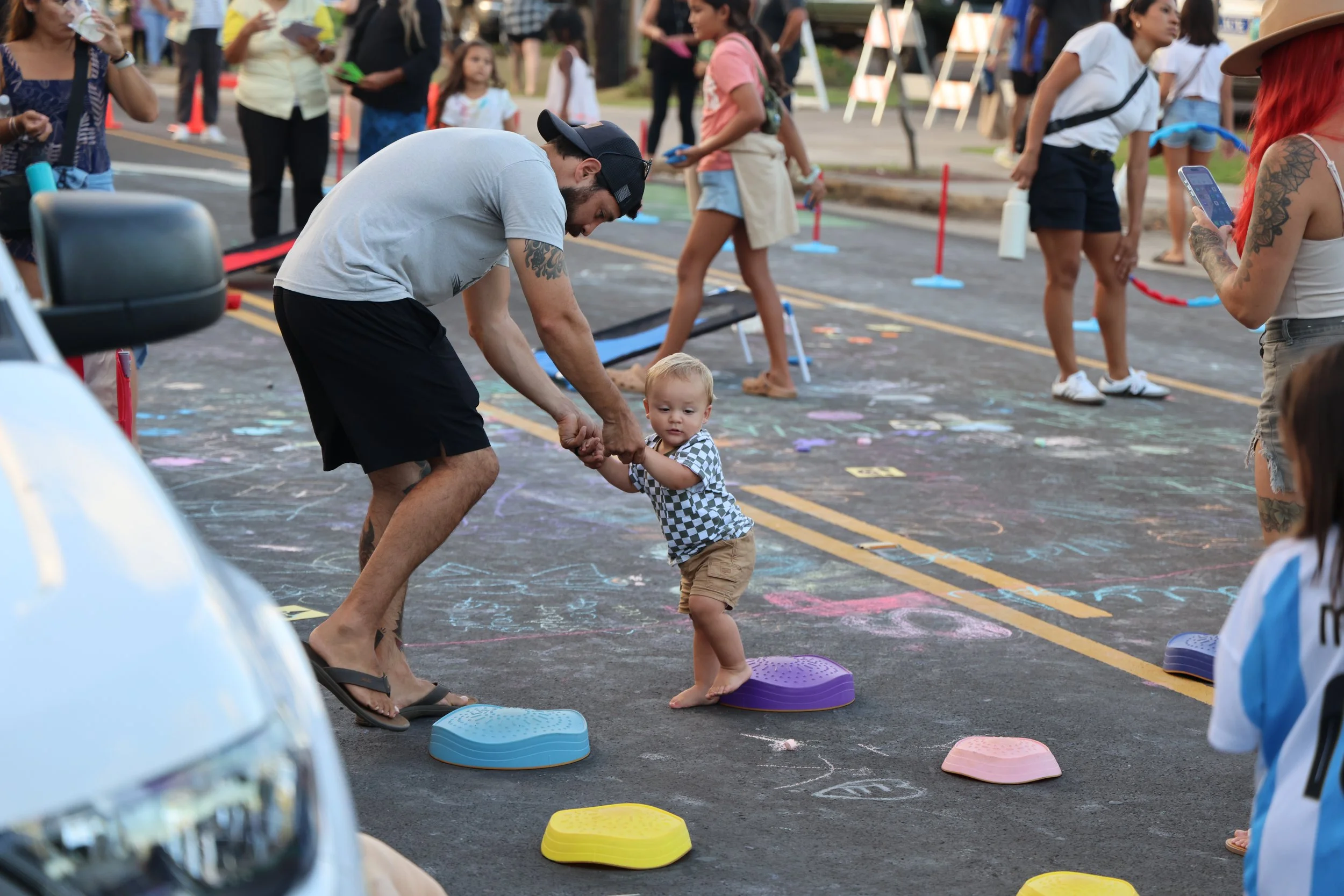
Play for all ages.
Physical Activity Play: Tips by Age Group
PSK is all about active play!
From exclusive biking/skating areas to open space for some basketball or quiet games, you can organize your PSK event to your unique community needs! Here are some ideas that will help you have something for everyone, but feel free to bring your own.
-
Balance paths: Use pool noodles, painted lines, or stepping stones to guide slow, steady walking.
Stretch & sway stations: Post simple images or prompts (e.g., “Reach for the sky,” “Touch your toes,” “Make a rainbow with your arms”).
Breath & motion circles: Invite participants to do slow movements paired with deep breathing (e.g., pretend to blow up a balloon, sway like trees).
Gentle rhythm zone: Use egg shakers, bamboo sticks, or body percussion (pat knees, clap, tap feet).
Chair movement corner: Seated stretches, arm circles, or light dancing for those who prefer or require support.
Intergenerational mirror play: Stand face-to-face and copy each other’s slow movements (like a “moving mirror”).
-
Play Focus: Exploration, movement basics, and imagination
Chase bubbles, roll balls, or run through sprinklers
Use chalk to create shapes or paths using jumping stones to hop and follow
Set up soft obstacle paths with cones, mats, or pool noodles
Encourage animal walks: crawl like a bear, hop like a frog, waddle like a duck
-
Play Focus: Skill-building, creativity, and energetic fun
Create a skateboard, scooter or bike zone with chalk lanes and playful signs (Traffic gardens)
Jump rope, hula hoop, or play hopscotch, basketball game
Set up art or build zones using blocks, cardboard, or found materials
What we heard: The PSK planning team surveyed elementary school children to find out which of our current games and activities they enjoy the most. Below are the results:
Overall top picks: fingerboarding, basketball, and water games
Kindergartners (ages 5–6): Fishing.
1st graders (ages 6–7) Fishing, obstacle courses, and soccer.
2nd graders (ages 7–8) Fishing and soccer.
3rd graders (ages 8–9) Soccer and drawing with chalk
4th graders (ages 9–10) Fishing and obstacle course.
-
Play Focus: Independence, social connection, and movement variety
Skateboarding area
Balance wars (how long can you balance?)
Create sidewalk/street chalk art murals
Pose challenge stations (“Strike a pose here!” “Jump photo challenge!” with chalk outlines)
Teens film or photograph their own edits of the Play Streets day for sharing later (DIY media)
-
Play Focus: Social movement, creative expression, and energy release
Casual games: frisbee toss, four square, or giant Jenga, juggling station
Set up a community art wall or chalk zone with motivational messages
Join in family-friendly games with keiki—modeling playful movement
-
Play Focus: Modeling movement, stress relief, and connection
Join in chalk art, hula hooping, or sidewalk games with kids
Play games from your own childhood with today’s keiki
Hula Hoop Challenge
Chalk Art “Fitness Zones”: Create chalk-drawn fitness stations where each area represents a different movement challenge, like “20 Jumping Jacks” or “10 Lunges.” People can walk through the space and stop at each station to complete the challenges at their own pace.
-
Play Focus: Gentle movement, balance, and social joy
Join group walks, gentle stretching, or tai chi-style motion circles
Help lead keiki play—bubbles, chalk art, or storytelling games
Set up a “movement garden” area for light stepping, swaying, or guided motion
Enjoy intergenerational play with grandkids and neighbors

